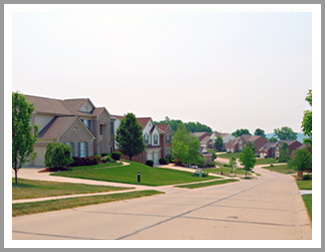Sustainability
Safeguarding the Environment is Everyone's Responsibility
 The world’s population has grown by more than 250% from 2.9 billion in 1950 to almost 6.8 billion in 2009, according to the U.S. Census Bureau. As the population has increased and industrial development has grown with it, the world’s supply of natural resources becomes scarcer and at greater risk of depletion.
The world’s population has grown by more than 250% from 2.9 billion in 1950 to almost 6.8 billion in 2009, according to the U.S. Census Bureau. As the population has increased and industrial development has grown with it, the world’s supply of natural resources becomes scarcer and at greater risk of depletion.
Sustainability, balancing the environmental requirements with societal needs and economic considerations, is one of the most important issues of our time. Although many industries are “going green,” concrete pavements have long been recognized for their inherent sustainable features… and for a long history of exceptional environmental performance.
Recyclability and Reuse
Concrete is the most recycled construction material in the world, according to the Construction Materials Recycling Association. Concrete is 100% recyclable and reusable, and can be used as aggregate in new concrete pavements, base materials for new roadways, or for other uses, including erosion control and flood prevention.
Light Reflectance
 The light color of concrete helps pavements reflect light better than dark materials, like asphalt. This enhances safety, conserves street-lighting energy, and keeps urban areas cooler. Concrete is naturally reflective which helps reduce urban temperatures, a phenomena called the “heat island effect.”
The light color of concrete helps pavements reflect light better than dark materials, like asphalt. This enhances safety, conserves street-lighting energy, and keeps urban areas cooler. Concrete is naturally reflective which helps reduce urban temperatures, a phenomena called the “heat island effect.”
Local Supplies
Concrete pavements are typically produced from abundant supplies of locally available resources, such as limestone, rock, and sand. Modern concrete also incorporates waste materials, such as slag, which comes from iron manufacturing, and fly ash, a byproduct of from energy production.
Durability
Because concrete pavements last longer, they do not require as much gasoline and other fossil fuels, which are required every time lower quality pavements need maintenance and repair. Less maintenance and fewer repairs also means there is less traffic congestion with concrete pavements. This reduces fuel consumption and air pollution, because there’s less waiting in traffic and idling in construction work zones.
For pavements that meet sustainable construction goals, concrete is the right choice beneath your tires.
